When that minor ache changes into an irritating throb. And your favorite foods become your enemy. A tiny, invisible pest has likely created a cozy campground in your tooth. That is a cavity. If left uncared for, these tiny holes can turn into significant pain. Then, sensitivity or even lead to more complex dental problems. These problems will affect your daily life in ways you cannot imagine.
So, how much does a dental filling cost? The answer may surprise you because the price for restoring your smile is hardly uniform. What you pay ultimately depends on a complex interplay of influencing factors. They are beyond the tooth itself.
In the following blog, we will explain the costs of the dental filling. Along with potential costs, and the major cost-driving factors. The role of dental insurance and reasonable ways to save costs. And also the invaluable help a dental professional can provide to help you. Mainly to navigate this decision-making.
What is a Dental Filling? Types of Dental Fillings?
Dental fillings are restorative treatments. Dentists use this to repair cavities or minor chips and cracks. Tooth or cavity fillings fall under the broader category of dental restorations. This includes inlays, onlays, bridges, and crowns. Your dentist will help determine the best filling option for your specific needs.
There are many different types of dental fillings. But they all fall into one of two categories: direct or indirect.
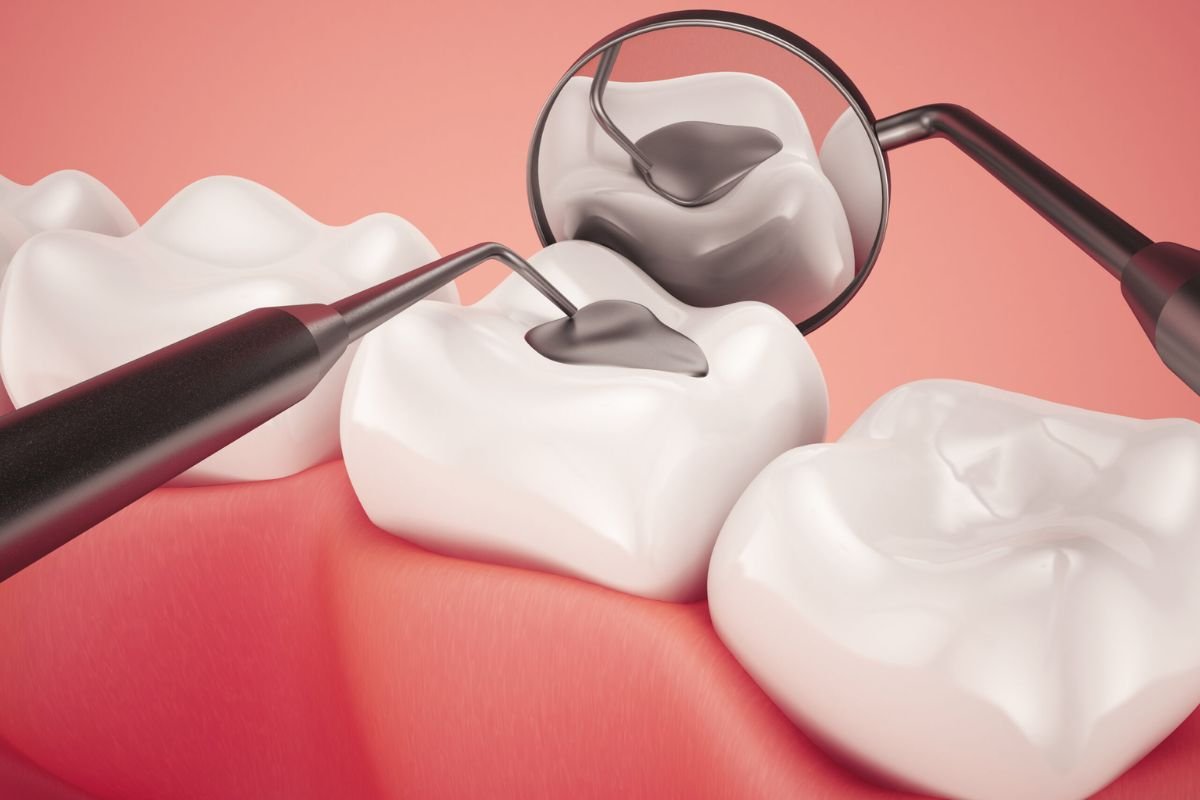
- Direct Fillings: These are created and placed directly in your mouth. Typically, in a single visit, without needing a dental lab. Common materials include amalgam (silver), resin composite (tooth-colored), and glass ionomer (tooth-colored).
- Indirect Fillings: These require a dental lab to fabricate the restoration. Or they are done over two visits. Though CAD/CAM technology can allow for single-visit placement. Inlays and onlays are common types. They are used for damage too extensive for a direct filling. But not severe enough for a crown. Materials often include gold or porcelain.
Cause:
When food and drink sugars mix with mouth bacteria, they create acid that erodes tooth enamel. Frequent exposure to these acids leads to mineral loss. Initially appearing as a white spot, a sign of early decay.
At this stage, decay can be reversed! Saliva minerals and fluoride from toothpaste or dental treatments can repair the enamel. If mineral loss outpaces repair, the enamel weakens, forming a cavity. Untreated decay can lead to larger holes. And also tooth destruction, pain, infection, and even tooth loss.
How Much Does a Dental Filling Cost? Without Insurance:
Without insurance, the cost of a dental filling can vary considerably. Ranging from approximately $100 to $4,000, with an average estimate between $200 and $600. This wide price spectrum is influenced by some essential factors.
The cost of your dental filling may depend on the type of material your dentist uses. Here are some types of Dental fillings with their cost:
1. Silver Amalgam Fillings
Made from a strong blend of silver, mercury, tin, and copper. The silver amalgam fillings are known for their durability and affordability. They are ideal for back teeth, where chewing pressure is greatest. Costs range from $50 to $200 for 1–2 teeth or $150 to $400 for 3 or more teeth, making them one of the most budget-friendly options.
2. Tooth-Colored Composite Resin Fillings
Crafted from acrylic resin mixed with powdered glass. Composite fillings blend seamlessly with your natural teeth, offering a more aesthetic solution. They are popular for front and visible teeth. Wondering how much does a dental filling cost? For this option, expect to pay $150 to $300 for 1–2 teeth or $200 to $550 for 3 or more teeth.
3. Gold Fillings
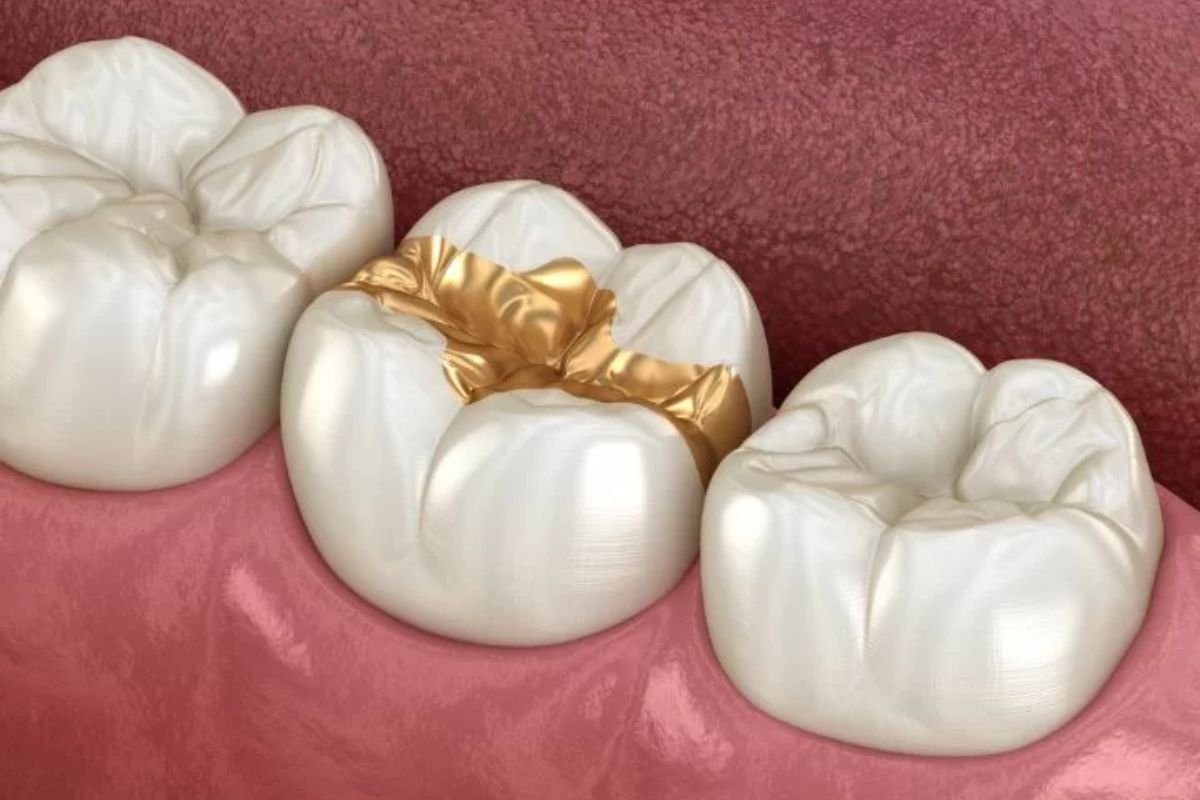
Gold fillings are made from a premium mix of gold. And other metals such as silver, zinc, palladium, copper, and platinum. Known for longevity and resistance to wear, they’re the priciest choice but can last decades. The cost ranges from $300 to $1,000 for 1–2 teeth and $450 to $1,800 for 3 or more teeth.
4. Porcelain Ceramic Fillings (Inlays)
These fillings are created from resin reinforced with ceramic glass, quartz, and silica. They offer a natural look with high stain resistance. They are custom-made in a lab and bonded into place, giving them a perfect fit. Prices can vary widely, ranging from $300 to $4,500 per procedure, depending on complexity.
5. Glass Ionomer Fillings
Made from a mix of acrylic materials and glass. These fillings release fluoride to help protect teeth from decay. They are often used for children’s teeth or non-biting surfaces. Costs generally range from $116 – $285 per tooth. Making them a moderately priced choice with added protective benefits.
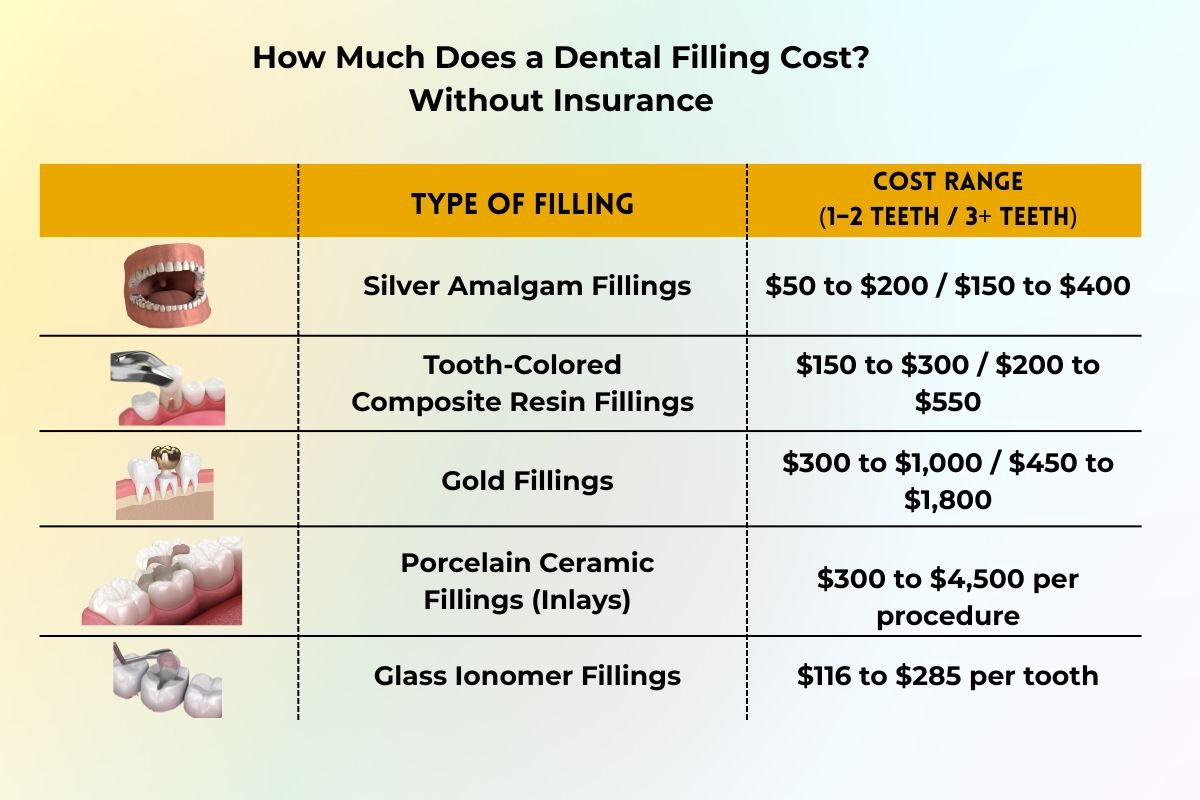
| Type of Filling | Cost Range (1–2 teeth / 3+ teeth) |
| Silver Amalgam Fillings | $50 to $200 / $150 to $400 |
| Tooth-Colored Composite Resin Fillings | $150 to $300 / $200 to $550 |
| Gold Fillings | $300 to $1,000 / $450 to $1,800 |
| Porcelain Ceramic Fillings (Inlays) | $300 to $4,500 per procedure |
| Glass Ionomer Fillings | $116 to $285 per tooth |
Also Read:
Factors That Affect the Cost:
The material chosen for your dental filling significantly impacts the overall cost. Each option comes with its pros and cons. They directly influence the final price and your dentist’s recommendation. Here are some common factors that directly impact your choice. And also answer the question, how much does a dental filling cost?
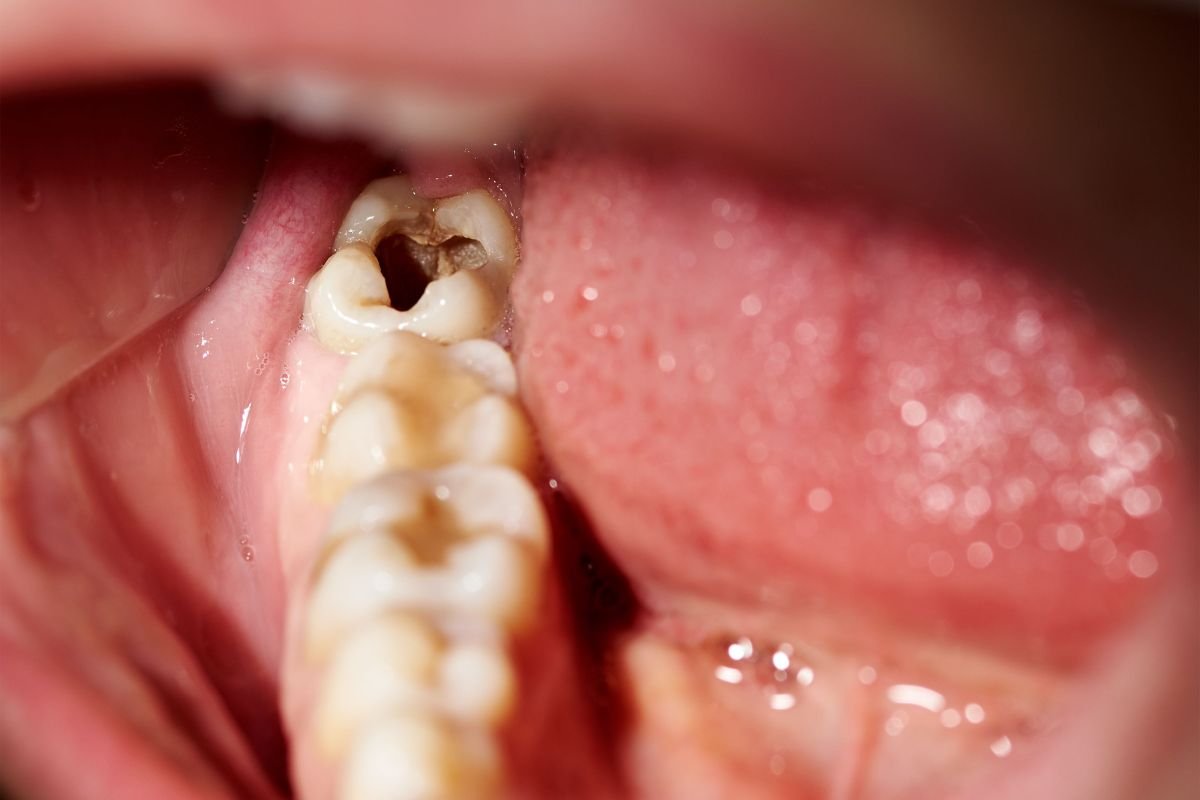
- Size of the Cavity: The larger the cavity, the more material and time are needed. It directly increases the cost. Extensive decay demands more intricate work. To restore your tooth’s function and appearance.
- Location of the Tooth: Front tooth fillings might differ in cost from those on molars. Due to accessibility, visibility, and the complexity of the procedure. Material choices can vary based on the tooth’s location, impacting the final price.
- Dentist’s Experience Level: Highly experienced dentists. With their advanced training and established reputations. They may have higher fees. Their expertise often translates to superior skill and precision. Justifying the added expense for quality care.
- Geographic Location: Dental filling costs fluctuate significantly by region. Urban areas generally have higher prices than rural ones. Influenced by local economic factors, demand for services, and the varying healthcare system.
- Dental Clinic Overhead Costs: A clinic’s operational expenses. It includes rent, staff salaries, and equipment. This impacts the price of fillings. These overheads explain why costs can differ considerably between practices.
- Insurance Coverage: Your dental insurance plan plays a crucial role. Usually, for your out-of-pocket expenses. Coverage varies, with some plans fully covering basic fillings. While others only cover a percentage, leaving you responsible for the rest.
- Additional Procedures Needed: Sometimes, a filling isn’t enough. If decay is extensive. Procedures like root canals or crowns might be necessary before a filling. Adding to the overall cost due to increased time, expertise, and materials.
- Anesthesia Requirements: The Type and amount of anesthesia can affect the total cost. While local anesthesia is common. Deeper cavities or patient needs might require additional sedation. Increasing the overall expense of the filling procedure.
Also Read:
- Root Canal Long-Term Side Effects: What You Need to Know?
- 10 Cutting-edge Dental AI Innovations You Can’t Miss in 2025
What does Insurance Cover?
Considering how much does a dental filling cost? It also involves your insurance coverage. Let’s find out what insurance generally covers. And how it helps in reducing the cost.
Dental insurance in the USA typically covers dental fillings. It does as part of basic restorative care. Most plans cover around 70% to 80% of filling costs after deductibles. Coverage usually includes common filling types like amalgam and composite resin. While gold or porcelain fillings may have limited coverage. Preventive care, like cleanings and X-rays, is often covered at 100%. Note that waiting periods, copays, and annual maximum limits can affect out-of-pocket costs. Dental insurance helps make fillings more affordable. By covering a significant portion of the expense.
Conclusion
Looking at the subtle signs of a cavity. Managing the different types of fillings and all their costs. We have covered a lot! We’ve learned that where your cavity is, the size, and the material used. And even the experience of your dentist can affect the final bill. We also discussed how insurance can be a significant factor. And how it can make the burden easier. The answer to the question is: how much does a dental filling cost? It is complicated. But now, after understanding the cost breakdown. You can make sound decisions for your oral health and smile with confidence.
FAQ:
1. What is the average cost of a dental filling in the U.S.?
The average cost ranges from $150 to $450 for a composite filling and $100 to $300 for an amalgam filling. Prices can go higher depending on material, location, and the dentist’s expertise.
2. Does dental insurance cover fillings?
Most dental insurance plans cover up to 80% of the cost for basic procedures. Such as fillings after your deductible. Check with your provider to confirm coverage limits and eligible materials.
3. How long do dental fillings last?
Amalgam fillings typically last 10–15 years, while composite fillings last 5–10 years. Longevity depends on oral hygiene, material type, and bite pressure.
References:
- https://my.clevelandclinic.org/health/treatments/17002-dental-fillings
- https://www.nidcr.nih.gov/health-info/dental-fillings
- https://www.carecredit.com/well-u/health-wellness/dental-tooth-fillings-cost-dental-fillings-financing/
- https://www.humana.com/dental-insurance/dental-resources/how-much-does-cavity-filling-cost
- https://www.webmd.com/health-insurance/dental-insurance-overview
- https://myalliancedentalcare.com/cost-of-tooth-fillings/



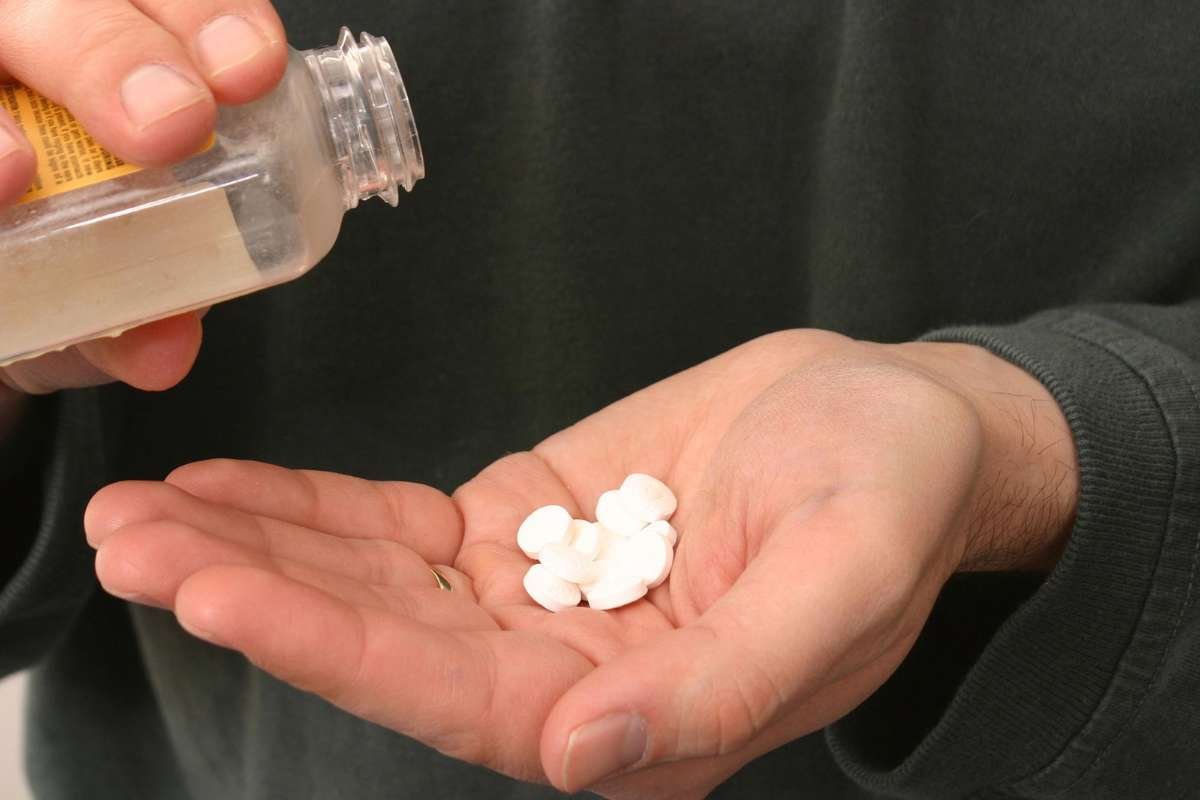

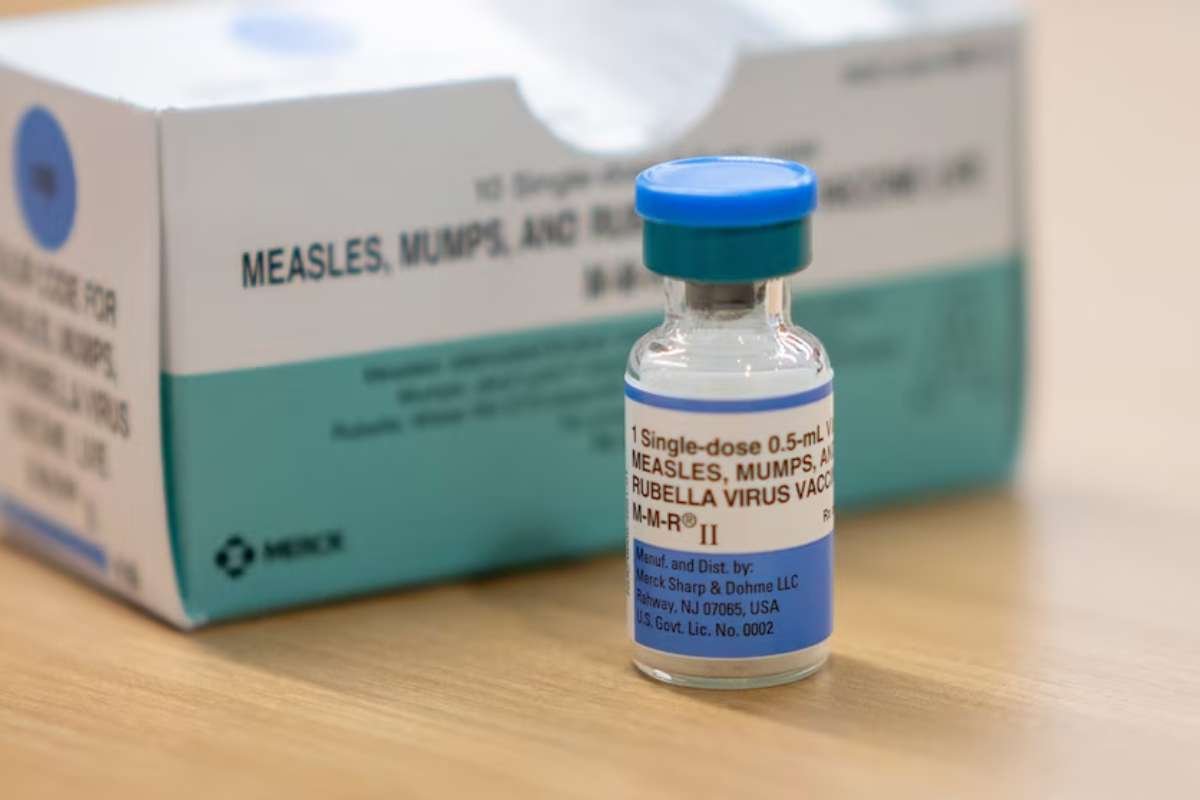
.jpg)
